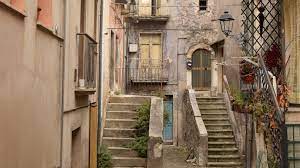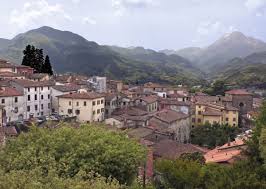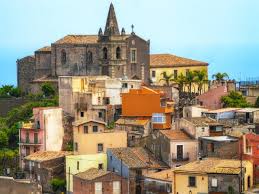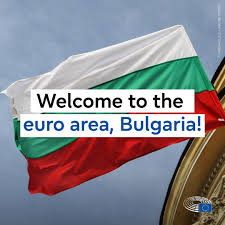Italy: €1 homes go on sale in one of best-kept secrets

Silvia Marchetti: With no crowds even before the pandemic, pretty villages, proximity to Rome, access to ski slopes and incredible scenery, the Italian region of Abruzzo has a lot to offer as a destination.
Until very recently, however, it hasn’t had what many people are turning to Italy in search of — houses on sale for €1, or a little over a dollar.
That’s all changed now. Abruzzo has finally joined the €1-house club with the launch of a new scheme in the picturesque town of Pratola Peligna.
Located in the Apennine Mountains, close to some of Italy’s best skiing pistes, it’s a secluded spot with a medieval district full of abandoned properties that local authorities hope will soon have new life breathed into them.
Like many other villages and towns selling off cheap homes, Pratola Peligna has suffered from a population decline. In the 1930s, it counted about 13,000 residents, but local officials say there are now just 7,000.
Many homes were left behind as families fled in search of a brighter future elsewhere. The dilapidated state of their old homes has been exacerbated over the years by several earthquakes, including a powerful one in 2009 that devastated the nearby town of L’Aquila.
Ahead of launching the €1 selloff, local officials have been mapping forsaken properties and trying to contact old owners — a challenging job says local councilor Paolo Di Bacco.
“We’ve been working on it for years, identifying suitable houses for the scheme that weren’t already involved in post-quake reconstruction,” he told CNN Travel. “Out of roughly 630 empty buildings, up to 250 could be sold for €1.
“Our goal is to make them all shine again and recover the beauty of the old center, even if that may take a while.”
Details and photos of houses deemed ready for sale are being regularly uploaded to the Pratola Peligna town hall website. A few have already been bought.
Di Bacco says that to speed sale procedures, new rules have been introduced to encourage buyers to swiftly restyle their new abode within a maximum of three years.
Unlike other towns running similar projects, Pratola Peligna will not require buyers to pay a deposit of up to €5,000 to guarantee they’ll renovate their new home. Instead, they’ll face a €10,000 fine if they fail to register a detailed plan of building works within six months.
“This is really in a worst-case scenario,” says Di Bacco. “We just want to make sure buyers actually follow through on their commitment and don’t simply purchase for €1 and then disappear.”
Mayor Antonella Di Nino wants things to run smoothly, but with certainty. She complains that in the past there have been people, including a few foreigners, who have snapped up a cheap crumbling home and then vanished, apparently, into thin air.
“That worsens the picture and kills our efforts,” she says. “Particularly with foreigners, tracking them down across the world and forcing them to complete the renovation becomes impossible. That’s something we want to avoid this time round.”
There are tougher rules for old owners, too. Either they agree to renovate their family home to avoid a dangerous collapse, or they must hand over the property to local authorities. Many have done so to avoid the burden and expense of maintaining the falling buildings.
“If in the meantime a roof collapses or a wall disintegrates, posing a threat to public safety, the town hall intervenes to secure the building and will make old owners, or their heirs, pay for the damage and repair,” says Di Bacco.
Pratola Peligna’s abandoned stone homes are crammed into its historical district, known as Schiavonia, where alleys are only wide enough for donkey carts.
Some properties are in good shape, with elaborate stone decorations and fancy arcaded portals. A few are even furnished. But most are just ruins housing forsaken belongings.
They’re all relatively small — about 70 square meters (750 square feet) across two floors. Some have multiple wrought iron balconies, a cellar and steps leading to the front door. In bygone days, dwellings were built this way in case heavy snowfalls blocked access to houses.
Most of the town’s €1 buildings have two separate entrances — a main one and another lower down the street leading to an underground storage room. Larger homes even have an attic and a terrace where housewives used to wash the linens and dry cereals and beans.
Back in the day, families and animals lived in common spaces. It was a tight-knit community in which people looked out for each other, says Di Bacco.
Some buildings, once belonging to the rural bourgeoisie, are still adorned with wall emblems and coats of arms and have painted wooden doors.
Other moss-covered dilapidated houses have holes in their roofs and empty windows.
The occupied areas of Pratola Peligna are a maze of pastel-colored, newer homes linked to the older ones through a network of arched passageways.
The town overlooks a pristine valley crossed by streams and surrounded by ski slopes and forests, once raided by pirates. Prehistoric fossils have been found in the area, including the skeleton of a mammoth.
Trekking routes wind into the wilderness of Majella National Park, still roamed by wolves and bears.
Carnivals and fairs
It is said Pratola was founded by fiery tribes that refused to capitulate to imperial Rome. The town’s name stems from the Latin word “pratulae,” meaning “vast cultivated meadow.” Once a thriving rural center under the rule of powerful bishops, its decline started when farmers could no longer survive on the fruits of their harsh labor.
The so-called “Earth District” is the most ancient part of town, circled by ruined walls and accessible by a stone portal bearing the image of a snake coiled around a cross.
It’s rural past is showcased at a quaint peasant museum. Some old traditions live on. There’s a religious parade during which the faithful walk on their knees and pilgrims cross mountains barefoot to celebrate the victory over the plague in 1456.
A picturesque carnival and food and artisan fairs lure day-trippers. Local specialties include dishes with special beans called “cannellini” and “poverelli.” Christmas menus feature seven different soups and spaghetti with trout sauce.
Local cakes include the moon-shaped “cecio ripieno” (stuffed chickpea) pastry filled with chickpea cream, chocolate and candied fruit, and “pizzelle” waffles, traditionally prepared by housewives and chefs who once a year compete in a cooking marathon.
Pratola Peligna makes some of the region’s top wines such as red Montepulciano d’Abruzzo and pinkish Cerasuolo and Trebbiano.
The popular skiing resorts of Roccaraso and Pescasseroli are nearby, while the town of Pescara on the Adriatic coast is relatively close. The village of Sulmona renowned for its artisan confetti is only 9 kilometers 95.6 miles) away.





